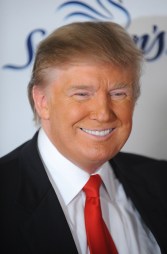Uber Wants Foreign Labor But Not For Drivers
By Joe Guzzardi
Uber, the multinational ride-hailing company that burst onto the scene in 2009, and made Yellow Cab passé, has, at least superficially, enjoyed a phenomenal success record. Only a little more than a decade after its formation, Uber operates in more than 60 countries, 785 municipal centers and has an estimated 110 million worldwide users.
The San Francisco-based Uber also, like its Silicon Valley neighbors Facebook, Apple, eBay, Google and Yahoo, among others, has displaced its U.S. software engineers with H-1B visa holders. Like its corporate partners-in-crime, Uber denies the charges that it laid off Americans in favor of employing foreign nationals.
But in its investigative journalism story, The Mercury News reported that Uber’s Sept. 10 filing with California’s employment regulator showed that in August it had laid off 88 workers from its San Francisco offices, and in October would lay off 320 more in its San Francisco and Palo Alto offices. Most were senior software engineers.
During 2019’s first three quarters, Uber filed about 1,800 preliminary applications with the Labor Department for H-1B visas for new software engineer jobs and about 1,500 for new senior software engineer jobs, proof that the company hopes to hire visa holders to replace the outgoing U.S. tech workers.
More evidence that money motivates the cheap labor-addicted Uber: its applications put nearly half the senior software engineer positions at the Labor Department’s Level 2 wages, the same level it listed for more than half of the non-senior jobs: a minimum of $109,242 for employment in Palo Alto and $121,077 in San Francisco.
But Ron Hira, a Howard University associate professor and H-1B expert, told The Mercury News that the Labor Department says that any software engineer’s job description that includes “senior” in its title should command a Level 3 wage, $132,184 in Palo Alto, and $147,597 in San Francisco.
Uber is just one more craven employer to terminate qualified Americans and replace them with pliant foreign workers. For example, in 2015, Toys “R” Usand Disney laid off their most experienced employees and, after forcing the outgoing Americans to train their less qualified replacements, filled the jobs with H-1Bs visa holders. Before and after 2015, the pattern of Americans out, visa holders in has been well established.
In its November 2019 report, Challenger Gray & Christmas, Inc., a global outplacement and business and executive coaching firm, stated that the tech sector announced 7,292 cuts in November. Furthermore, through November, tech companies estimated that they would reduce their payrolls by an additional 63,447 jobs. Tech’s annual job slashing total is 380 percent higher than the 13,222 cuts it announced during the same period in 2018 – 380 percent higher!
With H-1B visa abuse finally on Americans’ radar, President Trump is on the spot to deliver on the grandiose campaign promises he made to get tough. From candidate Trump’s March 2016 press release: “I will end forever the use of the H-1B as a cheap labor program, and institute an absolute requirement to hire American workers first for every visa and immigration program. No exceptions.”
Author, lawyer and long-time H-1B critic John Miano put together a list of seven steps that the president could take that include working with Congress to write legislation that would prevent foreign nationals from displacing Americans. But President Trump’s early promises have proven empty; he’s done little to alleviate the scandalous displacement of U.S. tech workers.
The H-1B visa benefits only the foreign nationals who come to the U.S. to take good jobs and the employers that hire them. The big losers are displaced Americans who will struggle to find new jobs. Also, on the stick’s short end are recent university STEM graduates who will be shut out because of employers’ cheap labor addictions. Congress and President Trump have, so far, refused to protect Americans.
Joe Guzzardi is a Progressives for Immigration Reform analyst who has written about immigration for more than 30 years. Contact him at jguzzardi@pfirdc.org.







